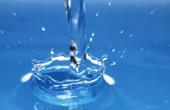Water and water-salt exchange( II)

Part of the water is excreted from the body together with urine. And in the case of drinking a liter of water at once, only about 60% of it will go to provide thermoregulation of the body, and the remaining 40% will be excreted in the urine. But in the case of a gradual intake of water into the body of 100-150 ml every hour, then up to 90% of water will separate from sweat. Hence it can be concluded that in the heat or when performing heavy physical work it is more advantageous to drink often, but in small quantities.
The content of table salt in the blood is 9.45 g per liter. Salt is excreted from the body together with sweat in smaller amounts( about 5 g of salt per 1 liter).That is, with abundant perspiration in the blood, the content of salt increases. The reaction to the violation of salt balance is a feeling of thirst, the body tends to reduce the concentration of salt in the blood. But in the case of a large amount of drunk water, the concentration of salt in the blood drops so significantly that in order to restore it, excess moisture from the body is removed with urine and plentiful sweat. Together with them more salt is taken away. Salt stocks of the body are very limited, and in case of their depletion the concentration of salt in the blood is not replenished. A consequence of this is an additional removal of moisture and, together with it, salts. The loss of water causes a thirst again and the circle closes.
Some positive effect in the fight against thirst may be the addition of some salt to the water, but in the presence of heavy physical exertion in the heat, increased salt intake reduces sweating, thereby disrupting thermoregulation, causing heat strokes and provoking heart failure.
Water reabsorption occurs in all parts of the nephron, passively, due to the transport of osmotically active substances, such as glucose, amino acids, proteins, sodium, potassium, calcium and chlorine ions. In the case of a decrease in the reabsorption of osmotically active substances, there is a decrease in the reabsorption of water. The presence of glucose in the final urine leads to polyuria( an increase in diuresis).
Sodium is the main ion providing passive absorption of water.
Kidneys maintain the necessary concentration of ions in the blood during regulation of the reabsorption and secretion of various ions in the renal tubules.
Sodium reabsorption is regulated by aldosterone and natriuretic hormone, which is produced in the atria. Reabsorption of sodium is increased in the distal sections of tubules and collecting tubules with the help of aldosterone. In the event that the concentration of sodium ions in the blood plasma decreases and the volume of circulating blood decreases, the secretion of aldosterone increases. Natriuretic hormone, the production of which increases with increasing volume of circulating blood and the volume of extracellular fluid in the body, depresses the reabsorption of sodium and enhances its excretion by the body.
Regulation of the secretion of potassium in the blood maintains its concentration. Aldosterone enhances the secretion of potassium in the distal tubule and collecting tubules. Insulin, on the contrary, reduces the release of potassium, increasing its concentration in the blood. With alkalosis, the release of potassium increases, and with acidosis - decreases. ...more
Used materials:
Shilov VN, Mits'yo VP"Healthy food"
